January 2022 update
Below are some progress highlights of the Health Technology (HT) building project from December 2021 and January 2022:
- The outdoor sculpture between the College Center (CC) and Health Technology (HT) building is being safely stored until it can be reinstalled after the site improvements are completed in 2023.
- The south concrete restroom tower was demolished during winter break.
- Active sorting and recycling of materials is ongoing as required for future LEED certification of the building.
- The new elevator pit was excavated, concrete foundations were completed, and the site is now ready for structural steel.
- Construction of an exterior west side ramp to access HT Level 1 started in January; completion is expected prior to the start of the spring term.
- Improvements to the building’s existing structure continue with micropiling, grade beam pile caps, and Fiber Reinforced Polymer.
Work on the HT job site continues with heavy equipment for activities such as demolition, concrete sawcutting, micropiling, and excavating. The contractor maintains a safe site for the workers and provides plans and precautions for fall prevention and shutdowns of the existing mechanical, electrical, and plumbing systems in the building.
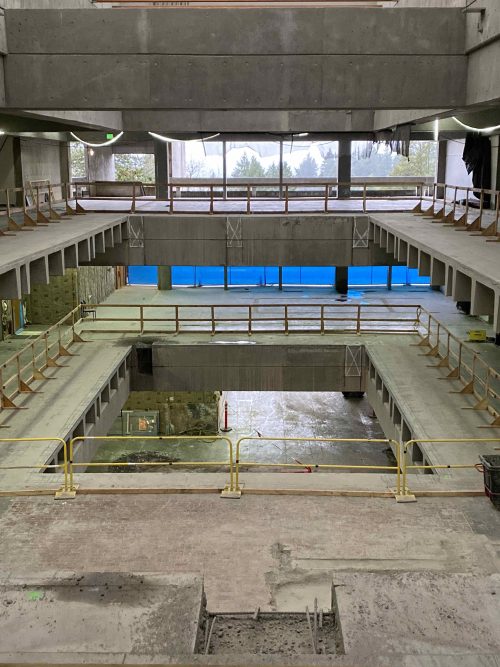
Guardrails at HT atrium
The outdoor sculpture that sat between the CC and HT buildings was carefully relocated to the south courtyard of the HT building. During this relocation, an evaluation of the existing structural integrity of the artwork was performed. The sculpture has been temporarily braced for relocation and storage until the site improvements of the south plaza are completed in 2023.
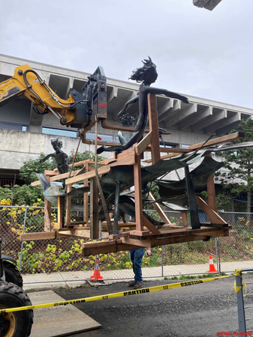
Outdoor sculpture being relocated
During winter break, the restroom tower on the south side of the HT building was demolished. Removal of this concrete structure from the open space allows for improvements to the plaza between the HT and CC building, including the addition of a green area with different seating opportunities for students to rest, study, or socialize outdoors.
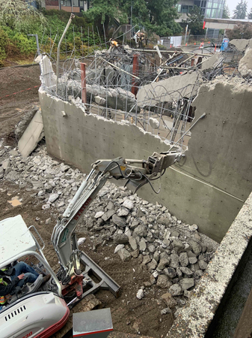
Restroom tower demolition
One of the commitments of this project is to reuse and recycle as much material as possible. This effort not only furthers the college’s sustainability goals, but also contributes to the project’s LEED certification. Where possible, materials are being salvaged and reused either in the current renovation or elsewhere on the Sylvania Campus. One example is the salvaging of existing wood siding from the exterior of the building for reuse as an interior finish material.
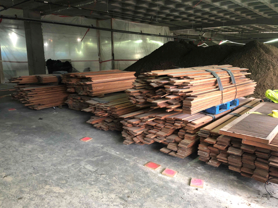
Existing wood saved for reuse on interior siding
An important improvement that will create a new accessible route for pedestrians to enter HT from the west side is the construction of an ADA ramp from G Street to HT Level 1. Construction for this ramp started in January and is expected to be complete after spring break in 2022. Work-related to this scope requires closing G Street daily while construction activities take place.
The construction crew is also working to open a temporary entrance on the south side of HT to Level 2 from the plaza shared with the CC building. The south entrance will provide more direct access to students and staff to the Gymnasium and new all-user restrooms in HT Level 2. The opening of this south entrance will likely occur in summer 2022.
To reinforce the building structure, the contractor is adding micropiles. Micropiles are usually a 3”-10” diameter piling that is augered into the ground. A steel casing is placed as the auger drills down to a specific depth determined by a structural engineer. Once the casing is placed in the ground, reinforcing steel is installed and it is filled with high-strength concrete or grout. There are 78 micropiles in the HT building and the work aims to be completed in February.
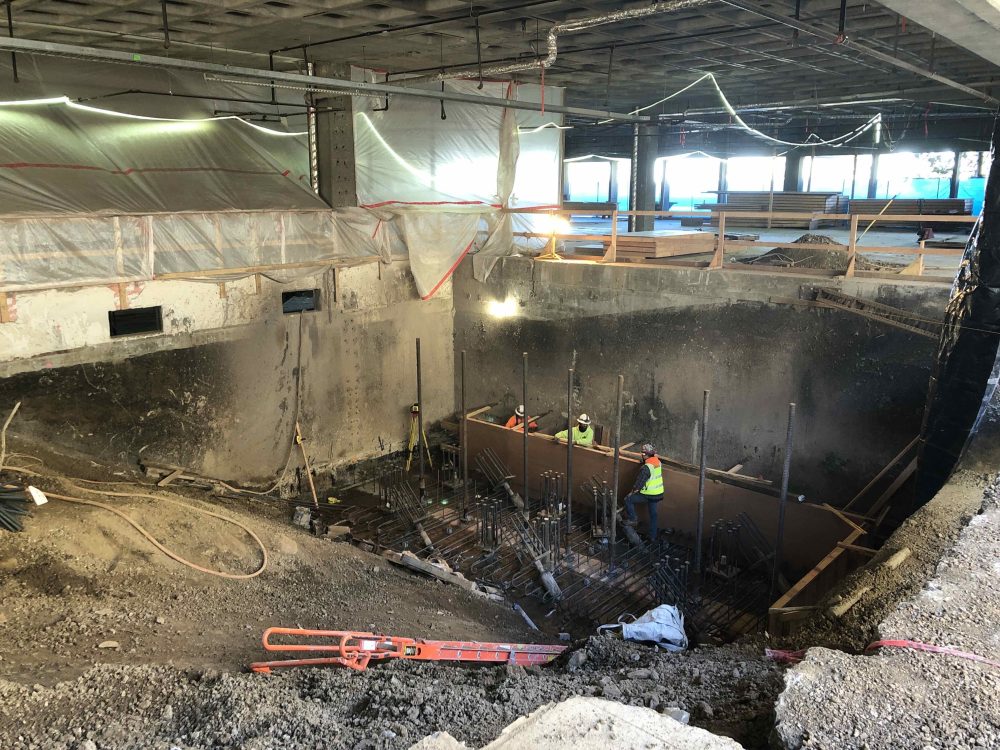
Building formwork for the edge of the grade pile cap
Another structural upgrade being performed as part of the HT renovation is with FRP (Fiber Reinforced Polymer). FRP are thin, flexible plastic panels made of strong polyester resin reinforced with fiberglass. These sheets are placed on columns, walls, and floors to provide added strength and support to the building’s key structural components. Work that involves the installation of FRP has been completed on Level 3 and is in progress on Level 2 and at the roof. To apply FRP on the HT roof, selected areas of the roof were demolished, and temporary tents were installed to keep the demolished area dry and temperature controlled while installation is underway.
The general contractor continues to work to meet their goals of including minority-, woman-, emerging small business-, service-disabled veteran-owned businesses, and increasing the percentage of people of color and women workers on this construction project. Also, in line with PCC expectations for safe worksite culture, the general contractor has implemented RISE Up Respectful Workplace Programming on the project. The program outlines a zero-tolerance policy for jobsite bullying, harassment, and hazing that disproportionately affects women and people of color. The program is introduced at orientation and reinforced over the life of the project through ‘toolbox talks’.
For more information, refer to the General Contractor monthly reports from January 2022 and February 2022.
